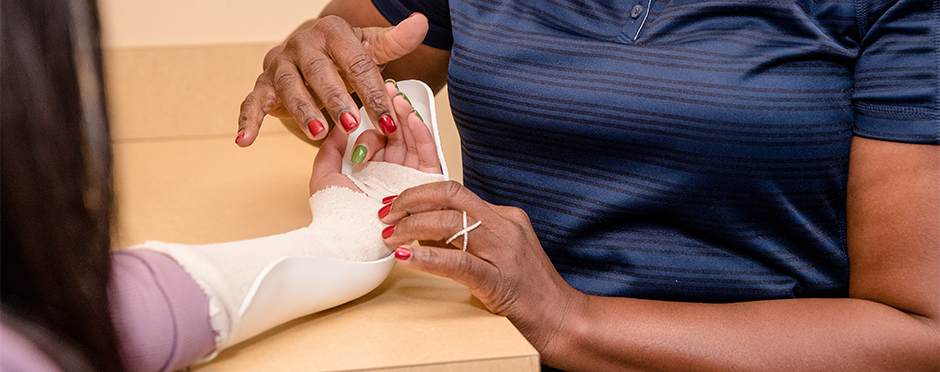
Occupational Therapy At A Glance: What It Is and What It’s Not
Leave a CommentHappy Occupational Therapy Month! Since 1980, April has been the month to celebrate occupational therapy (OT) nationally. Even though the profession started in the early 1900s, there are still misconceptions about the practice that remain to this day. Let’s explore what occupational therapy is, what it’s not, and what it could do for you!
Occupational therapists focus on daily activities. It aims to promote health and well-being so patients can do the things they love most without limitations1.
Many think that occupational therapists specifically support the work setting since occupations are commonly considered work-related. While OTs support those in the workforce, they work with patients who experience cognitive, emotional, and physical conditions that prevent them from job and day-to-day responsibilities. In addition, as exercises are often prescribed and a care plan can include manual therapy or pain modalities, many confuse occupational therapy with physical therapy. While these professions are distinct, you will often find occupational and physical therapists working in collaboration with one another to support the best outcomes for their patients.
OT addresses any daily task a person needs to accomplish throughout their life span, from a baby rolling over and achieving certain milestones to a senior tying their shoes and getting dressed. As with many professions, occupational therapy has specialties that deal with assistive technology, education, pediatrics, physical rehabilitation, and hand therapy, to name a few. OT can be found in multiple settings, such as school systems, hospitals, outpatient clinics, or private practice.
Occupational therapists working with individuals with physical disabilities focus on functional activities or assistive devices to improve functional independence and safety. Occupational therapists in the outpatient setting often focus more on the upper extremity, eye-hand coordination, and/or hand-sensory deficits. Regardless of the setting, treatment is focused on returning patients to the tasks, daily activities, and any occupations of importance to ultimately get them back to living their life to the fullest.
Athletico has a talented team of occupational therapists specializing in hand therapy. This includes supporting injuries and conditions affecting the shoulder, elbow, and hand. An Athletico occupational therapist or hand therapist can evaluate and prescribe exercises, instruct in joint protection or energy conservation, fabricate or fit orthoses (splints), and/or use manual therapy/pain modalities to help you return to your sport, work, or daily self-care.
To learn more about our occupational and hand therapy services or to connect with one of our movement experts, schedule a free assessment at a location near you!
*Per federal guidelines, beneficiaries of plans such as Medicare, Medicaid, Tricare, VHA and other federally funded plans are not eligible for free assessments.
The Athletico blog is an educational resource written by Athletico employees. Athletico bloggers are licensed professionals who abide by the code of ethics outlined by their respective professional associations. The content published in blog posts represents the opinion of the individual author based on their expertise and experience. The content provided in this blog is for informational purposes only, does not constitute medical advice and should not be relied on for making personal health decisions.
References:
1. https://www.aota.org/about/what-is-ot
